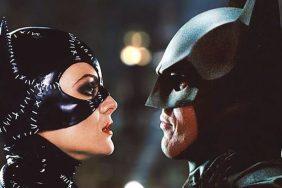Photo: Mario Tama / Staff(Getty Images)
Earlier this year, a copy of Action Comics # 1 sold for $3.2 million dollars, making it the most valuable comic in the world. For anyone who doesn’t read comics, Action Comics # 1 is the first appearance of Superman and it was published back in 1938. It is one of the most heavily sought comic books after back issues on the collectors’ market and very few copies of it are known to still exist.
Whenever a comic book like Action Comics # 1 is sold for a high price, it’s often used as an example of the collectivity of comics. It’s the idea that comics are more than a combination of words and artwork that tell a sequential story. To some collectors, comics are simply “investments” that have no intrinsic value except for the money that they can be sold for.
Several of the biggest comic companies have played into that mentality. In the last few years, variant covers have risen again as publishers attempt to create collectors items by producing specialty issues. To put it more simply, Marvel and DC (as well as many smaller publishers) create a standard comic book with a set cover image, before offering retailers a chance to order the same comic with a different cover image if they increase their orders to reach a certain threshold.
Essentially, this creates variant editions of the comics that have far fewer copies than the standard editions. 1:10 (one variant cover for every ten copies of the standard issue), 1:40 and 1:100 cover variants are popular once again with the speculators and the people who are willing to pay inflated prices for the same comic that was only $3.99 on the shelf.

A Skottie Young “Baby Variant Cover” From Marvel’s All-New X-Men… Comics are weird, sometimes.
It’s in the publishers’ and the retailers’ best interests to pass off these variant covers as collectors items that can only go up in value. But it’s a lie. The variant covers are not inherently valuable. They are only worth what someone is willing to pay for them.
In the comic book industry, the publishers and the speculators both contributed to the major crash of the ‘90s, in which the market was flooded with comics packaged as collectors items. Those “collectors items” now appear in the dollar bins of comic conventions because there was no audience to buy them in the first place. Publishers and retailers went out of business because they overextended themselves. And it’s a mistake that the publishers and retailers of the present seem all too eager to repeat.
How can modern comics lack value when their classic counterparts can still sell for thousands of dollars or more? It’s simple. There are three main components that determine whether a comic book is valuable: rarity, demand and historical significance. Action Comics # 1 meets all three of those components. Once the three criteria of value are met, the next step is grading the comic by the condition of the cover, the pages, whether it has been creased, etc… For the older comics, there are very rarely pristine copies, which plays into the demand and the skyrocketing cost.
Other perennial in-demand comics that can bring in big money include the first appearance of Batman in Detective Comics # 27, Spider-Man’s first appearance in Amazing Fantasy # 15 and Wolverine’s first appearance in Incredible Hulk # 180 and # 181. But those comic books tend to be priced well out of the range of most comics enthusiasts.
Are Comic Books A Good Investment?
Modern comics are easier to obtain in mint condition, but they can’t simply be “collectibles” just because a company or a retailer insists that they are. Very few comics in the last twenty years have become truly valuable. For example, the first printing of The Walking Dead # 1 has greatly increased in value because the TV show has made it even more popular and there were only a few thousand copies of that printing. The subsequent printings of The Walking Dead # 1 are worth far less to the collectors because there are so many of them that it is no longer a rare comic.
However, that’s the exception. There are often thousands of copies of the same comic coming out month after month, but there is very rarely a new comic of historical significance that strikes a chord with collectors and fans alike.

The Walking Dead # 1 From Image Comics.
The scary thing is that some comics aren’t even worth the cover price that you pay for them. If you purchased a $3.99 comic book and immediately wanted to resell it then you would be very lucky to get the full price of the comic back. Or even half of the price back. Today’s current comic books are eventually going to be in tomorrow’s dollar bin. It’s very rare for a comic to retain its value, much less go up in price.
So why buy comics at all? Well… there is this crazy notion that comics were meant to be read. If the only enjoyment that you derive from your comics is the pleasure of seeing them placed between a CGC slab with a grading number then you may want to reexamine your priorities. Unless you have some of the truly rare and in-demand comics then your collection is only a monument to the money that you spent on it.
It’s like a pyramid scheme. And do you really want to be at the bottom of the pyramid when everyone eventually figures out that there is little to no collectibility left in comics?
For those of you who truly love comics books as an artform, the good news is that there are some really amazing comics out there that can suit almost any taste. If you can find a comic book series that you really love for the characters, the story and the artwork then it can be a far more rewarding experience than any short term monetary gain from reselling it on the collectors’ market.
But feel free to share your own opinions in the comment section below!








